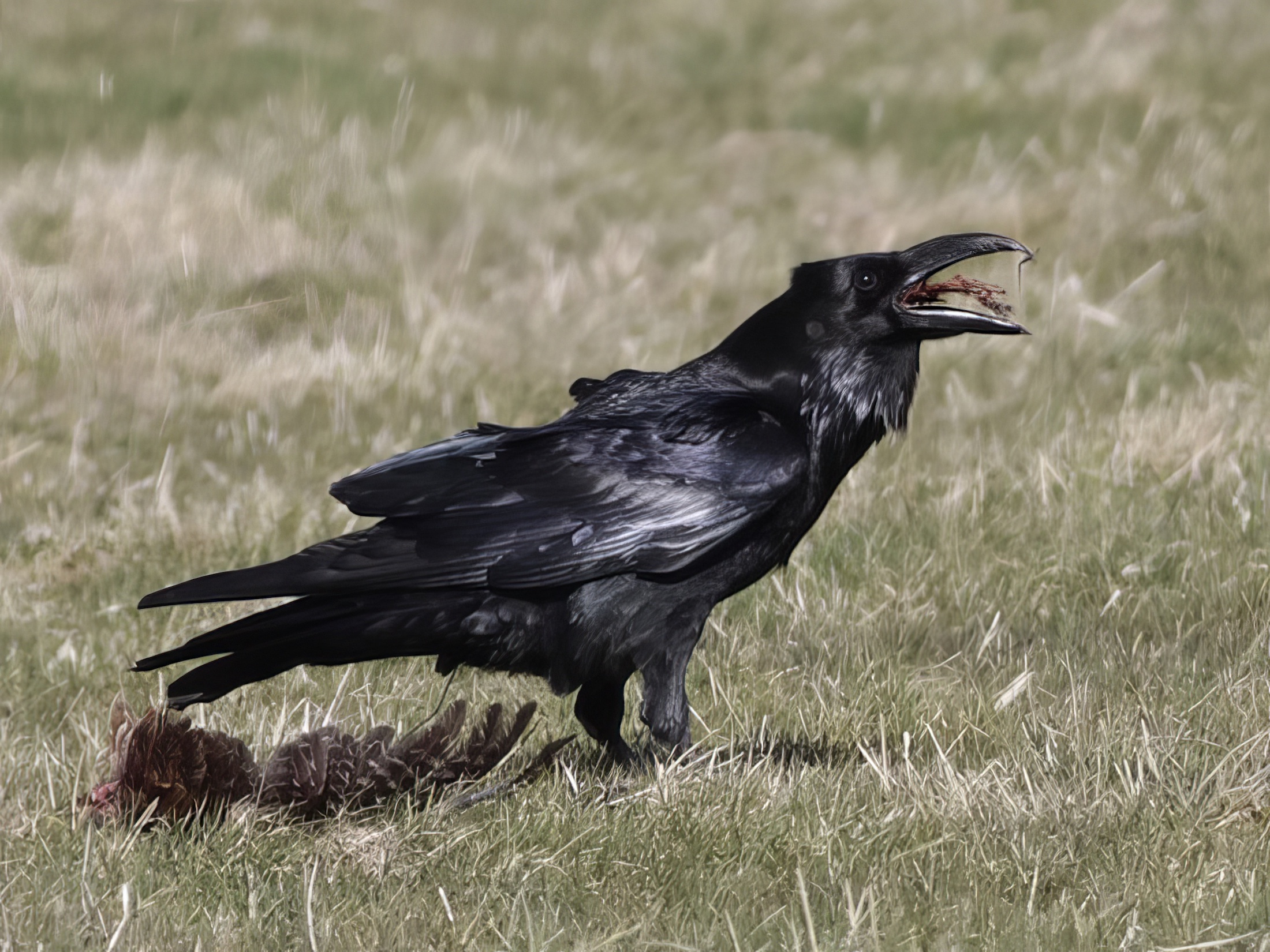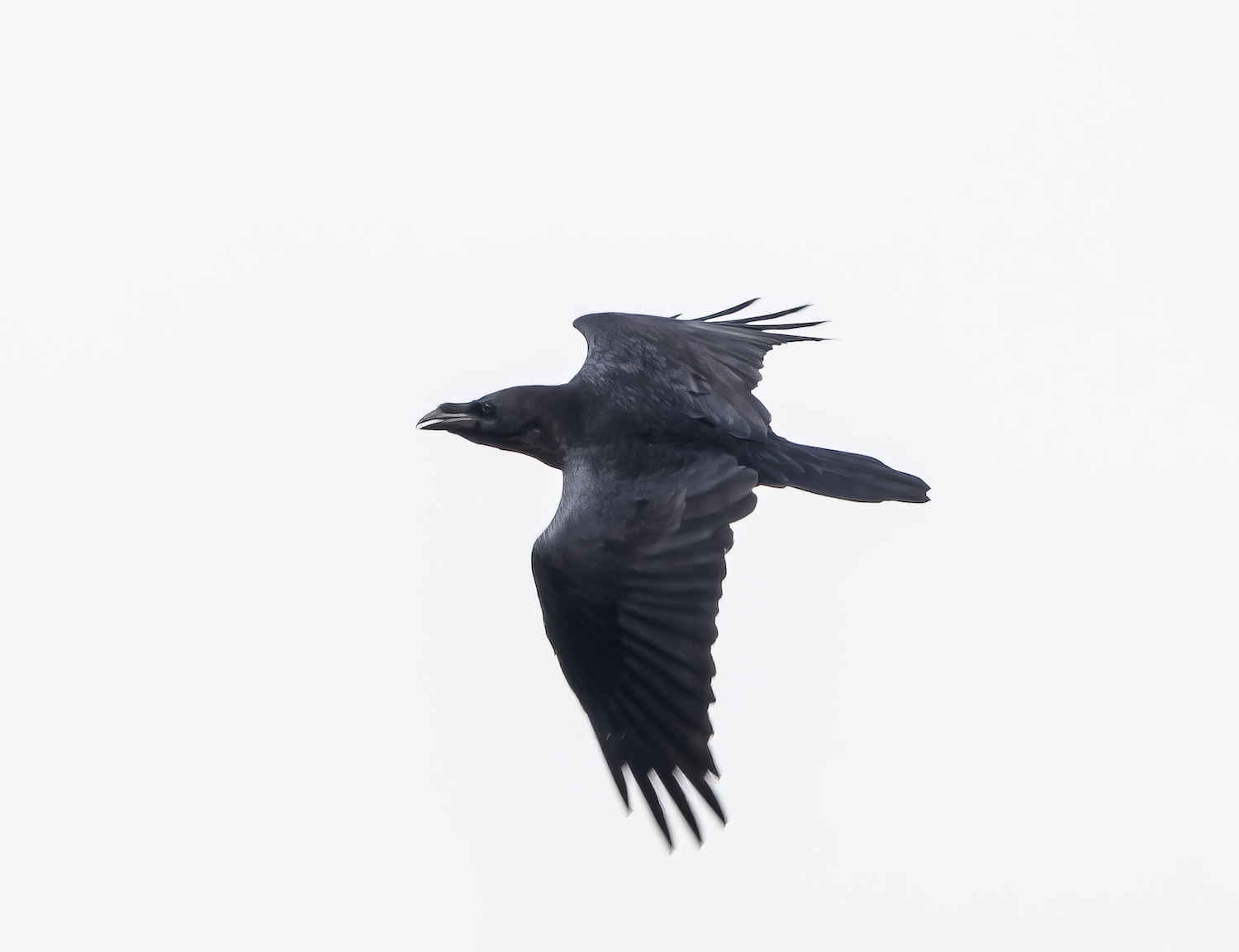Raven Corvus corax
Resident to 18th century but was extirpated, but now a scarce but increasing resident.


The return of the Raven as a breeding bird in Lincolnshire has been welcomed by all birders. It was listed as a vagrant in the Atlas up to the late 1990s. The only 20th century record was a bird at Donna Nook in February 1980. That changed when a bird was seen flying over Louth in July 2003 and then a pair turned up at Belton Park in November 2003. It was long anticipated, as breeding had become more widespread in the adjacent counties of Nottinghamshire and Leicestershire. The species had gradually been spreading eastwards from Wales and the border counties since the 1990s and the relatively rapid spread is well documented by the breeding change chart for Raven in the BTO Atlas 2007-2011. The first confirmed breeding at Belton Park took place in 2005 when two young were successfully fledged, and a second pair nested on a telecommunications tower in Temple Wood in 2010. The last BTO Atlas showed breeding was confirmed in three 10 km squares, with probable breeding in 2 squares, all in the extreme southwest. By 2014, eight territories were known. The pace of colonisation has been much slower than for Red Kite, Milvus milvus, or Buzzard, Buteo buteo, as emphasised by Fleming (2017). In the following 5 years breeding reports in LBR came from a wider area, including Whisby, the north and the Wolds. In 2018 Raven was reported from 48 sites across the county and 57 in 2019. There are probably still less than 20 pairs but the chances of seeing a Raven in Lincolnshire are now better than they have ever been. Birds are now more regularly seen at coastal locations especially in the autumn.
Raven at Donna Nook, February 11th-26th, 1980: an early 'modern day' record
by S. Lorand.
Note: This account is based on the article which first appeared in Lincolnshire Bird Report, 1980.
On February 11th, 1980, I discovered a Raven near the low-water mark at Donna Nook. I was able to watch the bird for about five minutes at ranges down to about 80 yd. before it flew away to the south. Its large size was immediately apparent since several Carrion Crows were also feeding on the shore, although none was associating with it. The combination of the deep, stout bill, the large head and typically loose feathers of the throat gave the bird a powerful, thick-set appearance as it walked strongly, or sometimes hopped, amongst the tide wrack and shingle.
When I tried to approach closer, the bird took to the air on easy, powerful wing beats and flew leisurely along the tide edge. In flight, it was longer-looking than a crow, less compact and with longer, narrower, and more pointed wings. The long tail was clearly graduated, the neck longer than in any other corvid, while the heavy bill was again a distinctive feature.
On various dates to February 26th, I found the Raven on the shore or on an area of newly-formed saltmarsh close to the dunes. I heard it call on only one occasion, on February 16th, when it gave the familiar deep, croaking ‘crork-crork’ delivered when it was in flight. Invariably the bird was on its own, although once I saw it being mobbed by two Carrion Crows. On this occasion it was seen to be considerably larger than the crows with a quite different flight silhouette and slower, deeper wing beats. It was unperturbed by the diving attacks of the crows and easily evaded them by rolling with wings almost closed alternated with strong direct flight and long glides.
Until the late 18th century, Ravens were widespread in lowland Britain, but there are few references to its early status in Lincolnshire. A pair is known to have bred on Louth church in 1693, and the species is said to have been common in the county prior to 1750. One pair was alleged to have been nesting near Scunthorpe until the end of the 18th century (Records of two seen near Caistor in 1887 and another near Brigg in 1901 cannot be substantiated). Nowadays, it is fairly common in much of northern and western Britain. It is a largely sedentary species although there have been recent sight records in Norfolk and Kent.
Reference
(Account as per new Birds of Lincolnshire (2021), included October 2022)
